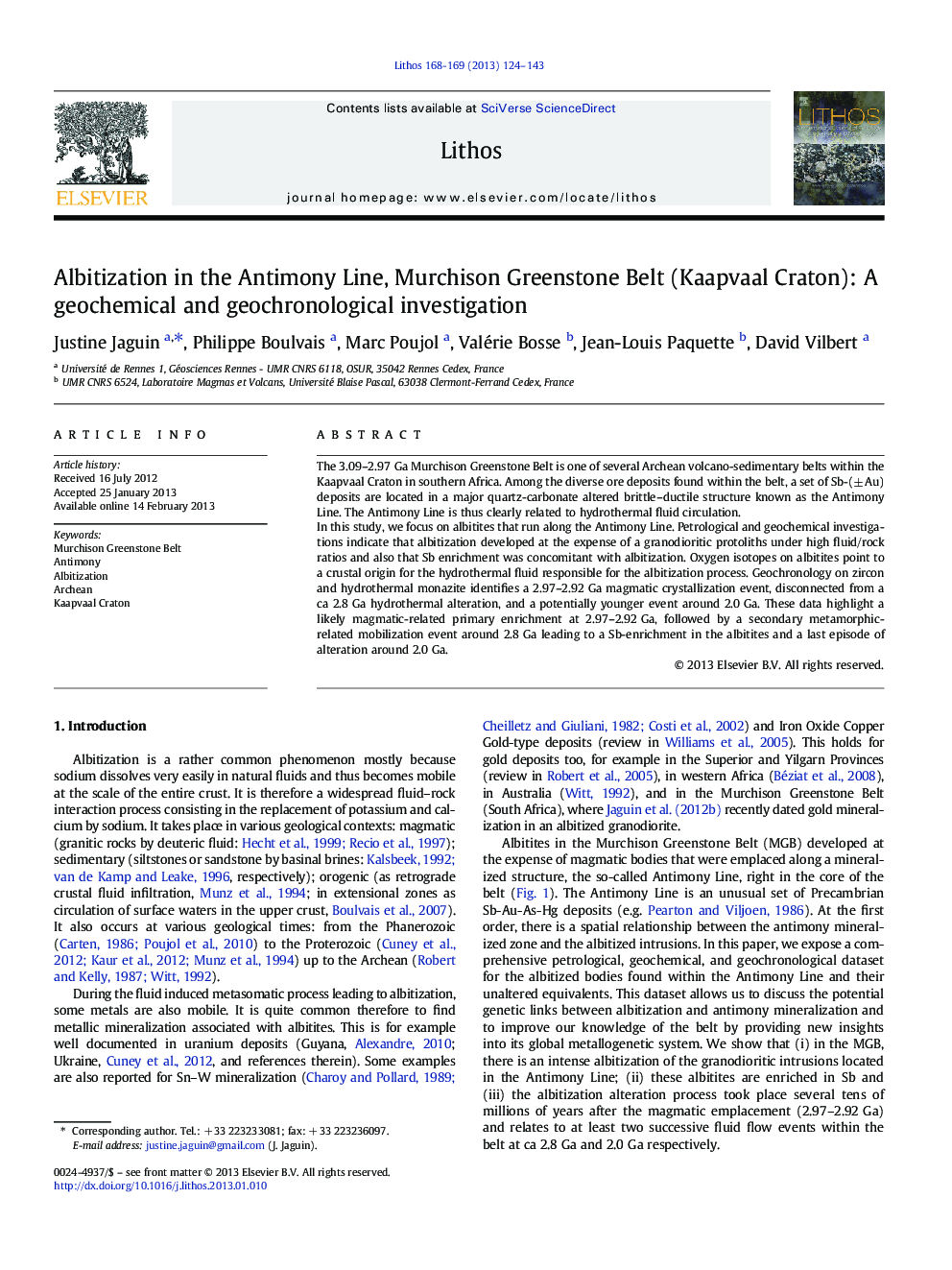| Article ID | Journal | Published Year | Pages | File Type |
|---|---|---|---|---|
| 4716312 | Lithos | 2013 | 20 Pages |
The 3.09–2.97 Ga Murchison Greenstone Belt is one of several Archean volcano-sedimentary belts within the Kaapvaal Craton in southern Africa. Among the diverse ore deposits found within the belt, a set of Sb-(± Au) deposits are located in a major quartz-carbonate altered brittle–ductile structure known as the Antimony Line. The Antimony Line is thus clearly related to hydrothermal fluid circulation.In this study, we focus on albitites that run along the Antimony Line. Petrological and geochemical investigations indicate that albitization developed at the expense of a granodioritic protoliths under high fluid/rock ratios and also that Sb enrichment was concomitant with albitization. Oxygen isotopes on albitites point to a crustal origin for the hydrothermal fluid responsible for the albitization process. Geochronology on zircon and hydrothermal monazite identifies a 2.97–2.92 Ga magmatic crystallization event, disconnected from a ca 2.8 Ga hydrothermal alteration, and a potentially younger event around 2.0 Ga. These data highlight a likely magmatic-related primary enrichment at 2.97–2.92 Ga, followed by a secondary metamorphic-related mobilization event around 2.8 Ga leading to a Sb-enrichment in the albitites and a last episode of alteration around 2.0 Ga.
► Albitites in the Murchison Greenstone Belt are related to Sb-fluid mineralization. ► Albitites developed at the expense of granodiorites plugs. ► There was likely a magmatic-related primary mineralization at 2.97–2.92 Ga. ► At ca 2.80 Ga, a crustal fluid triggered the albitization and the Sb-secondary mineralization.
